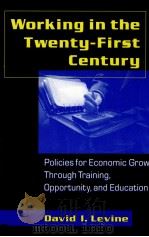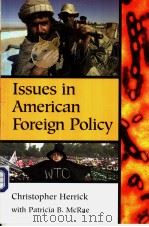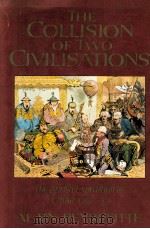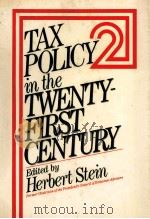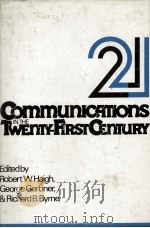《EAGLE RULES? FOREIGN POLICY AND AMERICAN PRIMACY IN THE TWENTY-FIRST CENTURY》
| 作者 | ROBERT J.LIEBER 编者 |
|---|---|
| 出版 | 未查询到或未知 |
| 参考页数 | 366 |
| 出版时间 | 没有确切时间的资料 目录预览 |
| ISBN号 | 0130909874 — 求助条款 |
| PDF编号 | 811866648(仅供预览,未存储实际文件) |
| 求助格式 | 扫描PDF(若分多册发行,每次仅能受理1册) |

Chapter 1: Foreign Policy and American Primacy1
Three Propositions about America's World Role3
Reversible Assumptions?12
Implications for Foreign Policy14
Part I: The Eagle at Home16
Chapter 2: Public Opinion and Foreign Policy16
Internationalism or Isolationism18
Threats to Vital U.S. Interests20
Foreign Policy Goals22
Globalization, Trade, and Protectionism25
Foreign Economic Assistance28
Deployment of U.S. Troops Abroad29
Partisanship: Persistence or Abatement?34
Conclusion40
Election Postscript44
Chapter 3: Who Rules the Roost? Congressional-Executive Relations on Foreign Policy After the Cold War47
Introduction47
Presidential versus Congressional Perspectives on Foreign Policy50
Historical and Post-Cold War Influences on Foreign Policy Roles52
The Post-Cold War Interbranch Balance on Foreign Policy56
Interbranch Relations on Trade and Finance57
Foreign Policy Appointments and the Senate Confirmation Process58
War Powers61
The Treaty Ratification Process65
Conclusions67
Part II: Regional Relations70
Chapter 4: The United States and Europe: From Primacy to Partnership?70
The Indispensable Power72
Growing Resentment of American Power81
Europe's Capacity for Partnership89
Europe's Outlook for Partnership92
Sharing Power and Responsibility for Decisions93
Towards Strategic Partnership95
Chapter 5: Transforming Russia: American Policy in the 1990s97
The Promise and the Critique97
The Policy Framework102
American Policy and Russia's Evolution in the 1990s109
Conclusion: The Limits of Influence129
Chapter 6: The United States and the Americas; Unfilled Promise at the Century's Turn133
The Bush-Clinton Agenda135
The Summit and Other Pieces of the Hemispheric Agenda138
A Divided U.S. Government140
The Postwar Political Template and the Clinton Paradox148
Chapter 7: A Cautionary Tale: The U.S. and the Arab-Israeli Conflict152
Global Conflict to Regional Disturbance154
Madrid: Ratifying U.S. Supremacy156
The Parties Act, and the U.S. Rejoices157
Limits of Influence158
Trouble in the Gulf160
Salvaging the Peace161
Crisis of the End Game162
Camp David II: The Three-Bluff Summit164
Jerusalem Redux166
Fingers in the Dike: From Paris to Sharm167
Clinton's Last Hurrah-and Barak's169
A Clarifying Act of Violence169
The Limits of Influence170
Chapter 8: Iraq and Iran: From Dual to Differentiated Containment173
Historical Background175
Dual Containment of Two "Rogue States"176
Iraq: Containment or Rollback?180
Iran: A Revolutionary or an Ordinary State?184
Implementing "Differentiated Containment": Prospects and Dilemmas188
Chapter 9: Lone Eagle, Lone Dragon? How the Cold War Did Not End for China194
Human Rights195
Economics199
National Security205
Taiwan207
Conclusion210
Chapter 10: The Untied States and Africa: Power with Limited Influence214
American National Interests in Africa216
Conclusion238
Part III: Security Issues241
Chapter 11: Defense Policy for the Twenty-First Century241
America's Strategic Choices242
The U.S. Margin of Military Superiority Is Vast244
Military Primacy and Effective Influence246
Pressures on the Defense Budget248
Setting New Military Priorities251
Recalibrating the MTW Measuring Stick254
Finding Nonmilitary Solutions for the New Century260
Conventional Force Structure for the New Century261
Summary264
Chapter 12: Use of Force Dilemmas: Policy and Politics266
The National Interest Debate Redux268
Policy Challenge: Ethnic Conflict Deterrence and Humanitarian Intervention Strategies269
U.S. Domestic Political Constraints: How Fixed, How Flexible?276
Conclusion: Difficult, but Doable280
Chapter 13: Weapons Proliferation and Missile Defense: New Patterns, Tough Choices282
A Brief Historical Review284
Further Challenges at the Century's End289
Tough Policy Choices Ahead291
Initial Perspectives on the Bush Administration297
Part IV: Globalization and Its Discontents299
Chapter 14: Containing Backlash: Foreign Economic Policy in an Age of Globalization299
Is Globalization Irreversible?301
Will U.S. Primacy Endure?305
Can U.S. Policy-makers Be Counted On?307
International Trade309
International Finance317
Conclusion321
Chapter 15: The Eagle and the Global Environment: The Burden of Being Essential324
A Model for Success: The 1987 Montreal Protocol325
A Model for Paralysis: The Stillborn Kyoto Climate Change Agreement327
Biodiversity Protection Policy: Failing to Ratify the CBD333
The Price of Disengagement: National Interests Compromised in the 2000 Biosafety Protocol337
Conclusion340
Chapter 16: The United States and International Organizations342
The Uses of Multilateralism343
The Clinton Years347
The Causes of U.S. Behavior349
Index353
《EAGLE RULES? FOREIGN POLICY AND AMERICAN PRIMACY IN THE TWENTY-FIRST CENTURY》由于是年代较久的资料都绝版了,几乎不可能购买到实物。如果大家为了学习确实需要,可向博主求助其电子版PDF文件。对合法合规的求助,我会当即受理并将下载地址发送给你。
高度相关资料
-
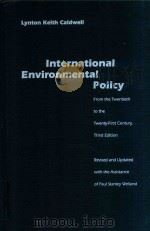
- International Environmental Policy From the Twentieth to the Twenty First Century
- 1996 Duke University Press
-
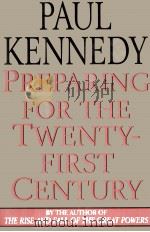
- OREPARING FOR THE TWENTY-FIRST CENTURY
- 1993 RANDOM HOUSE
-

- MINERALOGY:TOWARDS THE TWENTY-FIRST CENTURY
- 1977 LONDON THE ROYAL SOCIETY
-
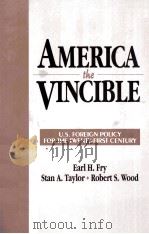
- AMERICA THE VINCIBLE:U.S.FOREIGN POLICY FOR THE TWENTY-FIRST CENTURY
- 1994 PRENTICE HALL
-

- ENVIRONMENTAL POLICY AND POLITICS:TOWARD THE TWENTY-FIRST CENTURY
- 1996 HARPER COLLINS COLLEGE PUBLISHERS
-

- WRITING FOR THE TWENTY-FIRST CENTURY
- 1988 MCGRAW-HILL BOOK COMPANY
-

- VISIONS FOR CHANGE CRIME AND JUSTICE IN THE TWENTY-FIRST CENTURY
- 1999 PRENTICE HALL
-

- SOCIAL PROBLEMS:GLOBALIZATION IN THE TWENTY-FIRST CENTURY
- 1999 PRENTICE HALL
提示:百度云已更名为百度网盘(百度盘),天翼云盘、微盘下载地址……暂未提供。➥ PDF文字可复制化或转WORD
